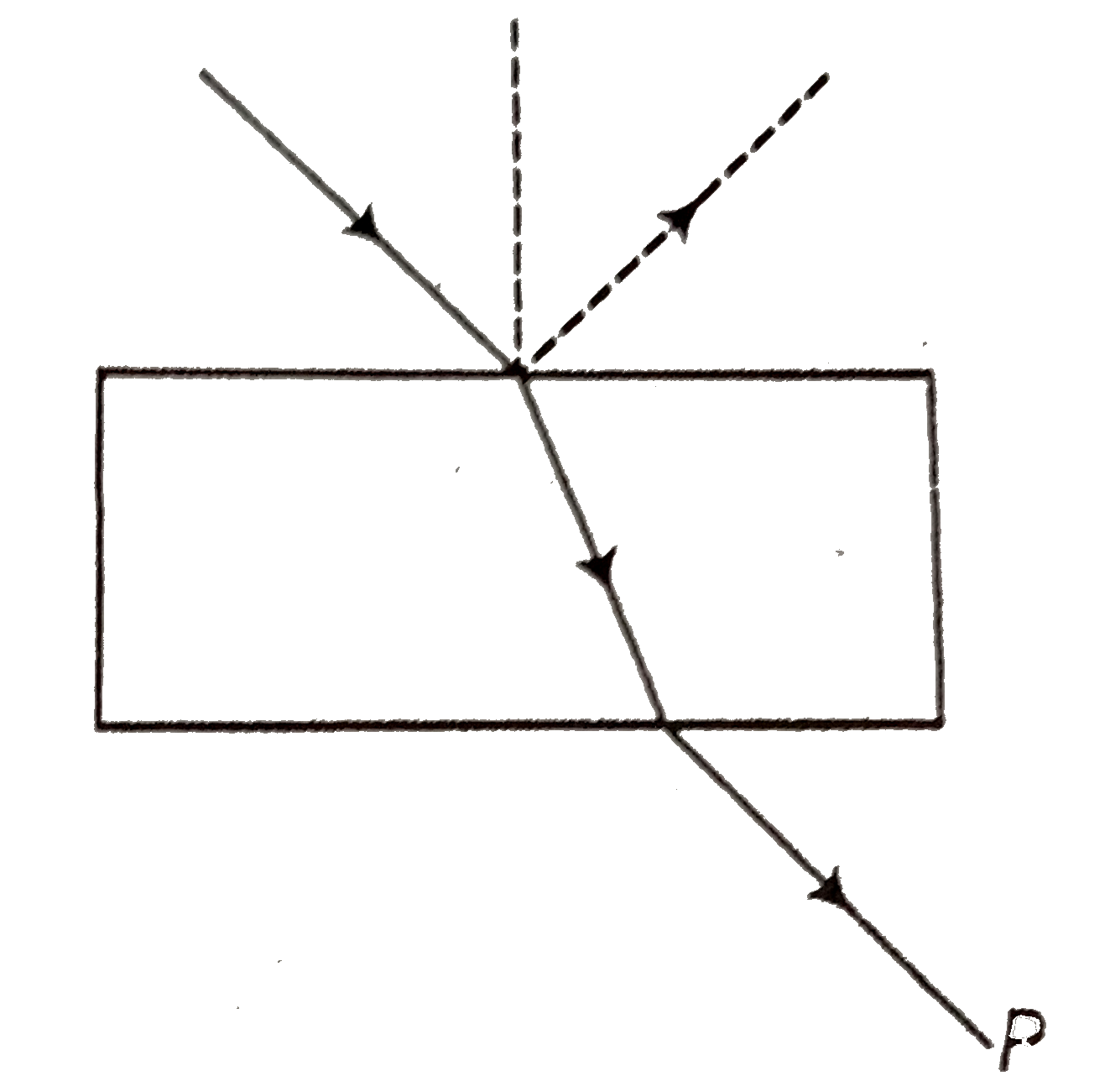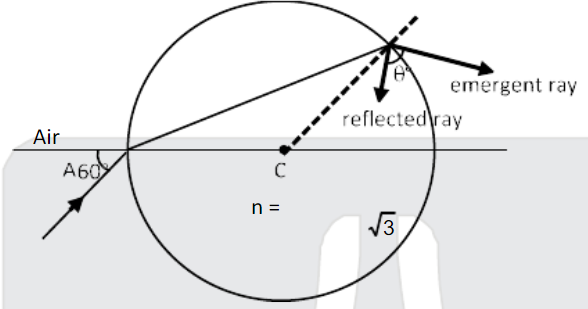White light is incident on the interface of glass and air as shown in figure. If green ligth is just totally internally reflected then the emerging ray in air contains

(a)Yellow, Orange, Red
(b)Violet, Indigo, Blue
(c)All colours
(d)All colours except green
The correct Answer is:1
Step by step video & image solution for White light is incident on the interface of glass and air as shown in figure. If green ligth is just totally internally reflected then the emerging ray in air contains by Physics experts to help you in doubts & scoring excellent marks in Class 12 exams.
Updated on:21/07/2023Topper's Solved these Questions
- RAY OPTICS BOOK - VMC MODULES ENGLISHCHAPTER - RAY OPTICS EXERCISE - PRACTICE EXERCISE-8
6 Videos
- RAY OPTICS BOOK - VMC MODULES ENGLISHCHAPTER - RAY OPTICS EXERCISE - PRACTICE EXERCISE-9
7 Videos
- RAY OPTICS BOOK - VMC MODULES ENGLISHCHAPTER - RAY OPTICS EXERCISE - PRACTICE EXERCISE-7
6 Videos
- QUIZBOOK - VMC MODULES ENGLISHCHAPTER - QUIZEXERCISE - PHYSICS
30 Videos
- RAY OPTICS AND WAVE OPTICS BOOK - VMC MODULES ENGLISHCHAPTER - RAY OPTICS AND WAVE OPTICS EXERCISE - IMPECCABLE
58 Videos
Similar Questions
A beam of white light is incident on the glass-air interface from glass to air such that green light just suffers total internal reflection. The colors of the light which will come out to air are

View Solution
A ray is incident on interface of two media at critical angle as shown in the figure.
View Solution
Knowledge Check
Consider a light beam incident from air to a glass slab at Brewster's angle as shown in figure.
A polaroid is placed in the path of the emergent ray at point P and rotated about an axis passing through the centre and pependicular to the plane of the plaroid.
 AFor a paricular orientation there shall be darkness as observed through the polaroid.BThe intensity of light as seen through the polaroid shall be independent of the rotation.CThe intensity of light as seen through the polaroid shall go through a minimum but not zero for two orientations of the polaroid.DThe intensity of light as seen through the polaroid shall go through a minimum for four orientations of the polaroid.
AFor a paricular orientation there shall be darkness as observed through the polaroid.BThe intensity of light as seen through the polaroid shall be independent of the rotation.CThe intensity of light as seen through the polaroid shall go through a minimum but not zero for two orientations of the polaroid.DThe intensity of light as seen through the polaroid shall go through a minimum for four orientations of the polaroid.
Statement I: A ray is incident from outside on a glass sphere surrounded by air as shown in Figure. This ray may suffer total internal reflection at the second interface.

Statement II: For a ray going from a denser to rarer medium, the ray may suffer total internal reflection.
View SolutionConsider a light beam incident from air to a glass slab at Brewster's angle as shown in figure.
A polaroid is placed in the path of the emergent ray at point P and rotated about an axis passing through the centre and pependicular to the plane of the polaroid.

View SolutionConsider a light beam incident from air to a glass slab at Brewster's angle as shown in figure.
A polaroid is placed in the path of the emergent ray at point P and rotated about an axis passing through the centre and pependicular to the plane of the plaroid.

View SolutionA ray of light is incident on a glass prism of refractive index μ and refractive angle A. If it just suffers total internal reflection at the other face, obtain an expression relating the angle of incidence , angle of prism and critical angle.
View SolutionA ray of light is incident on the left vertical face of glass cube of refractive index n2, as shown in figure. The plane of incidence is the plane of the page, and the cube is surrounded by liquid (refractive index=n1). What is the largest angle of incidence θ1 for which total internal reflection occurs at the top surfaces?

View SolutionLight incidence on a sphere of refractive index √3 placed in a air as shown in Figure. Find the angle (θ)in degree between emergent ray and reflected ray.

View SolutionA light ray moving in medium-I (of refractive index n1) is incident on interface of two media and it is totally internally reflected at the interface. Now, refractive index n2 of medium-II is decreased, then

View Solution
